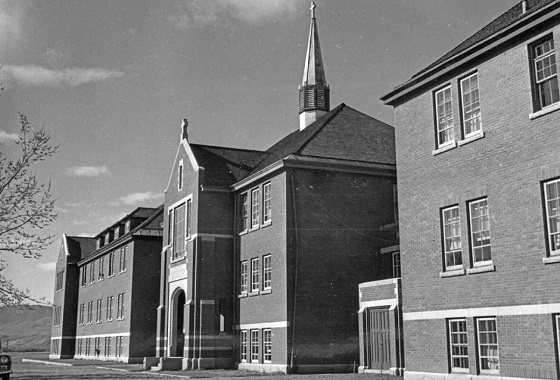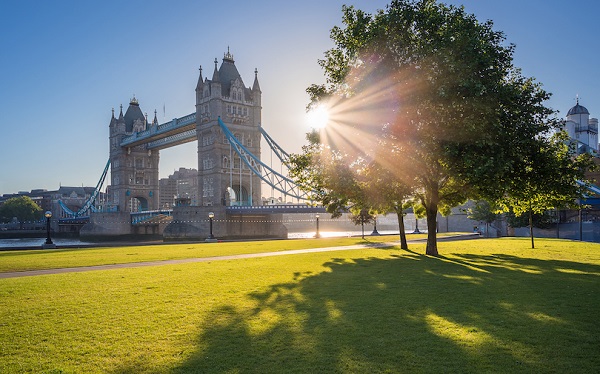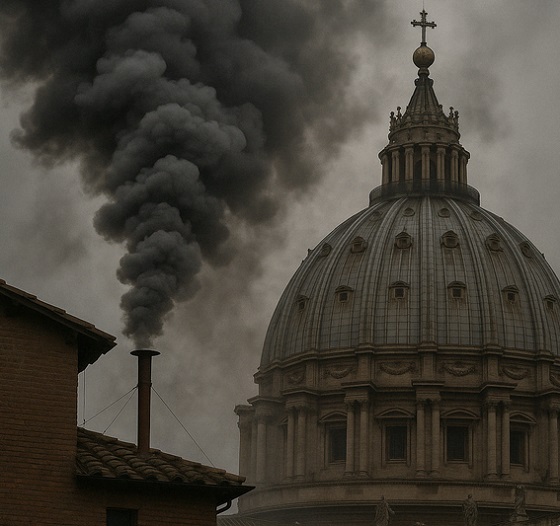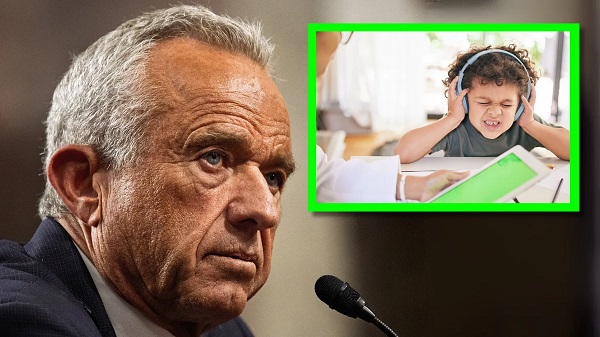Frontier Centre for Public Policy
Let’s get the facts on the graves, with a public inquiry

From the Frontier Centre for Public Policy
Canada needs a public inquiry into what has become known as “The Kamloops Graves Hoax”.
The May 27, 2021 claim of the Kamloops Indian band was that “human remains” were found in the apple orchard area of the former Kamloops Indian Residential School, resulting in what has been described both as a “national hysteria” and a “moral panic”. The band subsequently extended the claim to include other even more graphic terms, such as “bodies”, “graves” and even “mass graves”. Emotional articles and books followed.
In a press release issued three years after those sensational claims were made, their chief, Roseanne Casimir, has finally admitted the truth – there were no “human remains”, “bodies” “graves” or “mass graves” found at Kamloops.
Only “soil anomalies” were detected. Those anomalies could just as easily be tree roots, rocks, or the result of any of the other previous excavations that had been done in that same area. (As it happens there was a previous excavation in the area that was apparently missed by the radar operator. It is almost certain that it was soil anomalies from a 1924 excavation that her radar detected.)
Those 2021 false claims sent the nation into a panic. There is no need to describe in detail the flag-lowering, church-burning shock and frenzy that spread like wildfire through national and international media, brought the ailing Pope to Canada, convinced shamed MPs to condemn their own country as genocidal, vote in regressive UNDRIP and other incredibly expensive legislation, and spend what will be billions of dollars on a futile search for “missing children” who never existed. Many fine writers, including Terry Glavin, have described these strange last three years.
That episode of national hysteria is now an embarrassing part of Canada’s history.
A legitimate question to ask is why the Kamloops band made those false claims.
Chief Casimir said that they were based on Sarah Beaulieu’s report.
“But it would be shockingly unprofessional for a ground penetrating radar operator (GPR) to claim that graves had been found before excavation had taken place. It is well known that GPR can detect only soil anomalies or disturbances. It cannot detect “graves” or “human remains”. A simple Google search of the question “Can ground penetrating radar detect graves?” is all that is necessary to find that answer.
It therefore seems highly unlikely that Beaulieu would have made such a reckless claim. Almost certainly, Beaulieu properly reported only that soil disturbances, anomalies or reflections – that might be graves — were detected, and that excavation would be necessary to determine whether or not those disturbances were graves, or any of the hundreds of other possibilities.
But the answer to precisely what Beaulieu said can only be found by reading her report. And that is currently impossible, because the band is refusing to release the report. This is odd, because they had initially promised to release it, and only later reneged on that promise. They are are now steadfastly refusing to let the public see it.
The only reasonable explanation for this refusal is that they have something to hide – specifically that their claim of “graves” found was a claim they knew was false when they made it. Beaulieu’s report almost certainly did not say that graves had been found.
But on the strength of what appears to be a lie they made an application to the federal government for money to deal with what they said were “graves” containing the remains of 215 KIRS students – students they insisted had died under sinister circumstances, and were secretly buried by persons unknown, with the forced help of children – “as young as six”.
Exactly what representations the band made to the federal government in order to get the $8,000,000, or how the money was spent, is unknown, for the simple reason that both the band and the federal government have not released that information to the public.
Logic dictates that either Sarah Beaulieu, or Chief Roseanne Casimir, claimed that “graves” had been found, knowing that such information was false. Only one of them was telling the truth. $8,000,000 was obtained from the federal government on false information. Who made that false “grave” claim?
The Kamloops band refuses to release Beaulieu’s report – a report they initially promised to release. They are also refusing to provide any details about how the $8,000,000 was spent – despite not having put even one shovel in the ground. The RCMP is refusing to investigate anything involving the Kamloops claim, unless the Kamloops band requests their assistance. It is not likely that the band will ask the RCMP to investigate their own false claim. The federal government is refusing to release any details about the representations made by the band in order to obtain the $8,000,000.
And now, three years after that claim of “human remains” the Kamloops band has suddenly changed “remains” to exactly what they always were “anomalies”. They refuse to provide an explanation for that astounding reversal.
Meanwhile, there is absolutely no explanation from the Trudeau government about why they gave out millions of dollars of taxpayers’ money, and severely damaged Canada’s reputation at home and abroad, with a preposterous genocide confession, for allegations about secret graves that a simple Google search would have told them were false. There is also no explanation for the mainstream media’s failure to do that simple Google search, or ask even one obvious question about claims that were so highly improbable from the outset.
Hamlet’s “Something is rotten in the state of Denmark” quote is apt here.
Except the smell is coming straight from Kamloops and Ottawa.
Most Canadians now believe at least some version of the original claim that priests secretly buried indigenous children at Kamloops. One in five believe that priests actually murdered the children.
Life in Canada has been severely disrupted by the false claims made on May 27, 2021. Canada’s reputation has been badly damaged. Canadian schoolchildren are being falsely taught that their ancestors were genocidal racists.
We have now reached the absurd point where a Justice Minister of Canada has seriously considered criminalizing anyone asking legitimate questions about these secret burial claims, Canada’s Senate has recommended that even writing an article disputing the original May 27, 2021 Kamloops claim should be outlawed – apparently making not only this article – but even Casimir’s recent correction to “anomalies” illegal. This madness must end. Canadians deserve to know how things went so horribly wrong.
A public inquiry is the only way to clear the air, and get the country back on track.
Brian Giesbrecht, retired judge, is a senior fellow at the Frontier Centre for Public Policy.
2025 Federal Election
The Cost of Underselling Canadian Oil and Gas to the USA

From the Frontier Centre for Public Policy
Canadians can now track in real time how much revenue the country is forfeiting to the United States by selling its oil at discounted prices, thanks to a new online tracker from the Frontier Centre for Public Policy. The tracker shows the billions in revenue lost due to limited access to distribution for Canadian oil.
At a time of economic troubles and commercial tensions with the United States, selling our oil at a discount to U.S. middlemen who then sell it in the open markets at full price will rob Canada of nearly $19 billion this year, said Marco Navarro-Genie, the VP of Research at the Frontier Centre for Public Policy.
Navarro-Genie led the team that designed the counter.
The gap between world market prices and what Canada receives is due to the lack of Canadian infrastructure.
According to a recent analysis by Ian Madsen, senior policy analyst at the Frontier Centre, the lack of international export options forces Canadian producers to accept prices far below the world average. Each day this continues, the country loses hundreds of millions in potential revenue. This is a problem with a straightforward remedy, said David Leis, the Centre’s President. More pipelines need to be approved and built.
While the Trans Mountain Expansion (TMX) pipeline has helped, more is needed. It commenced commercial operations on May 1, 2024, nearly tripling Canada’s oil export capacity westward from 300,000 to 890,000 barrels daily. This expansion gives Canadian oil producers access to broader global markets, including Asia and the U.S. West Coast, potentially reducing the price discount on Canadian crude.
This is more than an oil story. While our oil price differential has long been recognized, there’s growing urgency around our natural gas exports. The global demand for cleaner energy, including Canadian natural gas, is climbing. Canada exports an average of 12.3 million GJ of gas daily. Yet, we can still not get the full value due to infrastructure bottlenecks, with losses of over $7.3 billion (2024). A dedicated counter reflecting these mounting gas losses underscores how critical this issue is.
“The losses are not theoretical numbers,” said Madsen. “This is real money, and Canadians can now see it slipping away, second by second.”
The Frontier Centre urges policymakers and industry leaders to recognize the economic urgency and ensure that infrastructure projects like TMX are fully supported and efficiently utilized to maximize Canada’s oil export potential. The webpage hosting the counter offers several examples of what the lost revenue could buy for Canadians. A similar counter for gas revenue lost through similarly discounted gas exports will be added in the coming days.
What Could Canada Do With $25.6 Billion a Year?
Without greater pipeline capacity, Canada loses an estimated (2025) $25.6 billion by selling our oil and gas to the U.S. at a steep discount. That money could be used in our communities — funding national defence, hiring nurses, supporting seniors, building schools, and improving infrastructure. Here’s what we’re giving up by underselling these natural resources.

342,000 Nurses
The average annual salary for a registered nurse in Canada is about $74,958. These funds could address staffing shortages and improve patient care nationwide.
Source

39,000 New Housing Units
At an estimated $472,000 per unit (excluding land costs, based on Toronto averages), $25.6 billion could fund nearly 94,000 affordable housing units.
Source
About the Frontier Centre for Public Policy
The Frontier Centre for Public Policy is an independent Canadian think-tank that researches and analyzes public policy issues, including energy, economics and governance.
Business
Hudson’s Bay Bid Raises Red Flags Over Foreign Influence

From the Frontier Centre for Public Policy
A billionaire’s retail ambition might also serve Beijing’s global influence strategy. Canada must look beyond the storefront
When B.C. billionaire Weihong Liu publicly declared interest in acquiring Hudson’s Bay stores, it wasn’t just a retail story—it was a signal flare in an era where foreign investment increasingly doubles as geopolitical strategy.
The Hudson’s Bay Company, founded in 1670, remains an enduring symbol of Canadian heritage. While its commercial relevance has waned in recent years, its brand is deeply etched into the national identity. That’s precisely why any potential acquisition, particularly by an investor with strong ties to the People’s Republic of China (PRC), deserves thoughtful, measured scrutiny.
Liu, a prominent figure in Vancouver’s Chinese-Canadian business community, announced her interest in acquiring several Hudson’s Bay stores on Chinese social media platform Xiaohongshu (RedNote), expressing a desire to “make the Bay great again.” Though revitalizing a Canadian retail icon may seem commendable, the timing and context of this bid suggest a broader strategic positioning—one that aligns with the People’s Republic of China’s increasingly nuanced approach to economic diplomacy, especially in countries like Canada that sit at the crossroads of American and Chinese spheres of influence.
This fits a familiar pattern. In recent years, we’ve seen examples of Chinese corporate involvement in Canadian cultural and commercial institutions, such as Huawei’s past sponsorship of Hockey Night in Canada. Even as national security concerns were raised by allies and intelligence agencies, Huawei’s logo remained a visible presence during one of the country’s most cherished broadcasts. These engagements, though often framed as commercially justified, serve another purpose: to normalize Chinese brand and state-linked presence within the fabric of Canadian identity and daily life.
What we may be witnessing is part of a broader PRC strategy to deepen economic and cultural ties with Canada at a time when U.S.-China relations remain strained. As American tariffs on Canadian goods—particularly in aluminum, lumber and dairy—have tested cross-border loyalties, Beijing has positioned itself as an alternative economic partner. Investments into cultural and heritage-linked assets like Hudson’s Bay could be seen as a symbolic extension of this effort to draw Canada further into its orbit of influence, subtly decoupling the country from the gravitational pull of its traditional allies.
From my perspective, as a professional with experience in threat finance, economic subversion and political leveraging, this does not necessarily imply nefarious intent in each case. However, it does demand a conscious awareness of how soft power is exercised through commercial influence, particularly by state-aligned actors. As I continue my research in international business law, I see how investment vehicles, trade deals and brand acquisitions can function as instruments of foreign policy—tools for shaping narratives, building alliances and shifting influence over time.
Canada must neither overreact nor overlook these developments. Open markets and cultural exchange are vital to our prosperity and pluralism. But so too is the responsibility to preserve our sovereignty—not only in the physical sense, but in the cultural and institutional dimensions that shape our national identity.
Strategic investment review processes, cultural asset protections and greater transparency around foreign corporate ownership can help strike this balance. We should be cautious not to allow historically Canadian institutions to become conduits, however unintentionally, for geopolitical leverage.
In a world where power is increasingly exercised through influence rather than force, safeguarding our heritage means understanding who is buying—and why.
Scott McGregor is the managing partner and CEO of Close Hold Intelligence Consulting.
-

 Business2 days ago
Business2 days agoChinese firm unveils palm-based biometric ID payments, sparking fresh privacy concerns
-

 2025 Federal Election1 day ago
2025 Federal Election1 day agoStudy links B.C.’s drug policies to more overdoses, but researchers urge caution
-

 2025 Federal Election2 days ago
2025 Federal Election2 days agoFormer WEF insider accuses Mark Carney of using fear tactics to usher globalism into Canada
-

 Environment2 days ago
Environment2 days agoExperiments to dim sunlight will soon be approved by UK government: report
-

 2025 Federal Election2 days ago
2025 Federal Election2 days agoConservatives promise to ban firing of Canadian federal workers based on COVID jab status
-

 International2 days ago
International2 days agoPope Francis Got Canadian History Wrong
-

 2025 Federal Election1 day ago
2025 Federal Election1 day agoCarney’s Hidden Climate Finance Agenda
-

 2025 Federal Election1 day ago
2025 Federal Election1 day agoWhen it comes to pipelines, Carney’s words flow both ways






